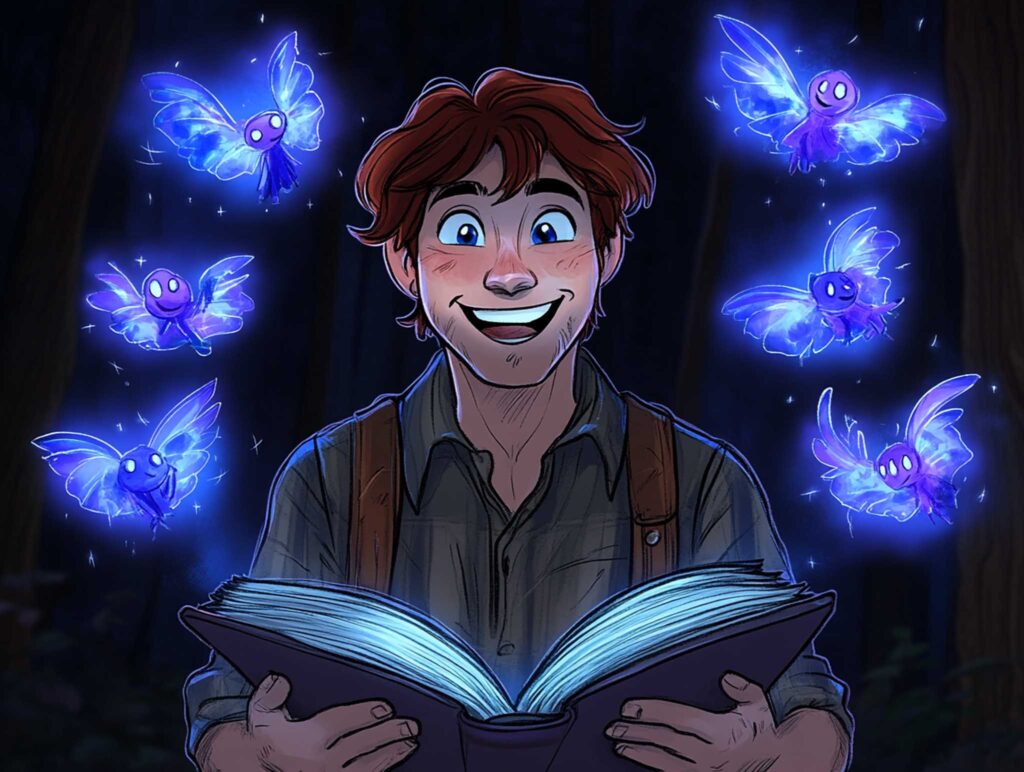Imagine a world where truth is a mere illusion, a tapestry woven with threads of deception and denial. In the realm of storytelling, characters often grapple with this reality, crafting intricate lies to shield themselves from harsh truths.
These lies are not just figments of imagination; they are powerful tools that shape narratives and breathe life into characters. But why do these lies resonate so profoundly with us? What makes them pivotal in storytelling?
Understanding Self-Deception in Characters
Self-deception is a curious phenomenon. It’s like looking into a mirror that reflects not the truth, but a comforting illusion.
Characters, much like us, often engage in self-deception to protect their fragile egos or to justify their actions. This act of lying to oneself is not just a narrative device; it’s a reflection of human nature itself.
Defining Self-Deception: The Lies We Believe
Self-deception can be defined as the act of convincing oneself of a truth that is, in fact, a lie. It’s a psychological defense mechanism that characters use to cope with reality.
Whether it’s the belief that one is invincible or the conviction that everything is under control, these lies are deeply ingrained in their psyche. Characters like Jay Gatsby from “The Great Gatsby” epitomize this, as he constructs an entire identity based on illusions of grandeur and lost love.
Characters often resort to self-deception as a means of avoiding painful truths. They weave a web of lies, convincing themselves of a reality that aligns with their desires. This internal conflict creates rich narrative tension and drives character development.
Feeling lost with your debut novel?
Fiverr Pro connects you with expert editors, designers, and marketers – everything you need to get your book ready for success!

The Psychology Behind Self-Deception
Delving into the psychology of self-deception reveals its roots in cognitive dissonance—the mental discomfort experienced when holding two conflicting beliefs.
Characters, much like real people, strive to reduce this discomfort by aligning their beliefs with their desires, even if it means embracing a lie. This psychological dance between truth and fiction is what makes self-deception a potent tool in storytelling.
To craft a believable character struggling with self-deception, explore their backstory. Understand the fears and desires driving their lies, and use these elements to create a complex, relatable character.
The Seven Lies Characters Tell Themselves
1. The Illusion of Control: “I Can Handle Everything”
The illusion of control is a common lie characters tell themselves to maintain a semblance of power over their lives.
This belief often leads them into precarious situations, where their overconfidence becomes their downfall. Consider Walter White from “Breaking Bad,” who believes he can control the dangerous world of drug trafficking, only to spiral deeper into chaos.
Characters who cling to this lie often face a rude awakening as their perceived control crumbles. This creates a compelling narrative arc, where they must confront their limitations and adapt to survive.

2. The Comfort of Denial: “Everything is Fine”
Denial is a warm blanket that characters wrap around themselves, shielding them from harsh realities. This lie allows them to ignore problems, hoping they’ll disappear on their own. Take the example of Scarlett O’Hara in “Gone with the Wind,” who repeatedly denies the impending collapse of her world until it’s too late.
Denial-driven characters often find themselves in a ticking time bomb scenario, where the truth eventually erupts, forcing them to face the consequences of their inaction.
3. The Fear of Vulnerability: “I Don’t Need Anyone”
Independence is a cherished trait, but when it morphs into a fear of vulnerability, it becomes a lie.
Characters who believe they don’t need anyone often isolate themselves, missing out on meaningful connections. Batman, for instance, is a loner who struggles with this lie, believing his mission requires solitude.
These characters’ journeys often involve learning to trust others, opening up to relationships that enrich their lives and drive the narrative forward.
Google Docs is for notes. Scrivener is for novels. Upgrade your writing game and try it for free today!

4. The Mask of Perfection: “I Am Always Right”
The pursuit of perfection is a double-edged sword. Characters who believe they are always right often face conflicts stemming from their inflexibility.
This lie blinds them to alternative perspectives, hindering their growth. A prime example is Hermione Granger in the early Harry Potter books, whose need to be right often clashes with her friends.
To add depth to a character who believes in their own perfection, introduce situations that challenge their beliefs. This will create opportunities for growth and transformation.
5. The Justification of Actions: “It’s for the Greater Good”
Justifying questionable actions as being for the greater good is a common self-deception among characters. This lie often leads them down a dark path, as they rationalize their behavior in pursuit of a noble cause. Anakin Skywalker’s fall to the dark side in “Star Wars” is driven by this very lie.
Such characters grapple with moral ambiguity, providing rich material for exploring ethical dilemmas and the consequences of their choices.
6. The Myth of Identity: “I Am Who I Pretend to Be”
Characters often construct false identities, convincing themselves they are someone they’re not. This lie is a shield against insecurities, allowing them to navigate the world with confidence. Don Draper in “Mad Men” embodies this, as he lives a life built on lies about his past.
Unraveling this lie often leads to a journey of self-discovery, where characters must confront their true selves and redefine their identity.

7. The Trap of Nostalgia: “The Past Was Better”
Nostalgia is a seductive trap, luring characters into the belief that the past was better than the present. This lie prevents them from embracing change and moving forward. Jay Gatsby’s obsession with recapturing the past exemplifies this, as he clings to a bygone era.
Characters ensnared by nostalgia must learn to let go, accepting that the future holds new possibilities. This transformation often marks a pivotal moment in their narrative arc.
The Impact of Lies on Narrative
Lies characters tell themselves are not just personal delusions; they are catalysts for narrative tension and conflict.
These lies create internal and external conflicts, driving the plot forward and challenging characters to evolve. The interplay between self-deception and truth is a dynamic force that shapes the story’s trajectory.
Creating Conflict and Tension through Self-Deception
Self-deception is a fertile ground for conflict. Characters embroiled in lies often clash with those around them, as their distorted perceptions lead to misunderstandings and confrontations.
This tension propels the narrative, keeping readers engaged as they anticipate the inevitable collision between illusion and reality.
| Lie | Resulting Conflict |
|---|---|
| The Illusion of Control | Overconfidence leads to failure |
| The Comfort of Denial | Ignored problems escalate |
| The Fear of Vulnerability | Isolation from meaningful relationships |
| The Mask of Perfection | Inflexibility causes friction |
| The Justification of Actions | Moral dilemmas arise |
| The Myth of Identity | Identity crisis and self-discovery |
| The Trap of Nostalgia | Resistance to change |
Character Growth: Transformation through Truth
Confronting the lies they tell themselves is a transformative journey for characters.
As they peel away layers of deception, they uncover truths that redefine their identity and purpose. This process of self-discovery and growth is at the heart of character development, creating arcs that resonate with audiences.
When writing a character’s transformation, focus on the moments of revelation. These turning points are crucial for illustrating their journey from self-deception to self-awareness.
Crafting Believable Characters with Self-Deception
To create believable characters, writers must delve into the complexities of self-deception. Characters are not mere vessels for plot; they are intricate beings with desires, fears, and flaws. By weaving self-deception into their narrative, writers add depth and authenticity to their characters.

Developing Flawed Yet Relatable Characters
Flaws make characters relatable. Self-deception is a universal human experience, and characters who grapple with it become mirrors of our own struggles. By embracing their imperfections, writers craft characters that resonate with readers on a profound level.
Using Unreliable Narrators to Enhance the Story
Unreliable narrators are masters of self-deception. Their skewed perspectives add layers of intrigue and mystery to the narrative, challenging readers to discern truth from fiction. This storytelling technique invites readers to become active participants, piecing together the puzzle of the narrative.
Exploring Themes through Self-Deception
Self-deception is a lens through which writers explore complex themes.
It serves as a vehicle for examining moral ambiguity, identity, and the human condition. By delving into the lies characters tell themselves, writers unravel the intricacies of these themes, inviting readers to reflect on their own beliefs and biases.
No marketing platform? No social following? No problem!
Publisher Rocket helps you market your debut novel like a pro.
It’s a gamechanger for debut authors – try it today!


Moral Ambiguity and Ethical Dilemmas
Characters entrenched in self-deception often face ethical dilemmas that blur the lines between right and wrong. This moral ambiguity adds depth to the narrative, prompting readers to question their own values and judgments.
The Search for Identity in a World of Lies
In a world where truth is elusive, characters embark on a quest for identity.
Self-deception is a catalyst for this journey, as characters grapple with the dichotomy between who they are and who they pretend to be. This exploration of identity is a poignant theme that resonates with audiences.

Inviting Reflection: The Writer’s Journey with Self-Deception
As writers, we embark on a journey of self-discovery alongside our characters.
Crafting narratives steeped in self-deception challenges us to examine our own truths and lies. This introspective process enriches our storytelling, infusing it with authenticity and depth.
Embracing Complexity in Character Development
Embracing complexity is the hallmark of effective character development. Characters are not static; they evolve through their struggles with self-deception. By embracing this complexity, writers create narratives that captivate and inspire.
Encouraging Readers to Examine Their Own Beliefs
Stories of self-deception serve as mirrors, reflecting our own tendencies to believe comforting lies.
As readers journey with characters, they are invited to examine their own beliefs and question the narratives they construct. This engagement fosters a deeper connection with the story and its themes.
To encourage readers to reflect on their own beliefs, pose thought-provoking questions within the narrative. This invites introspection and creates a lasting impact.








